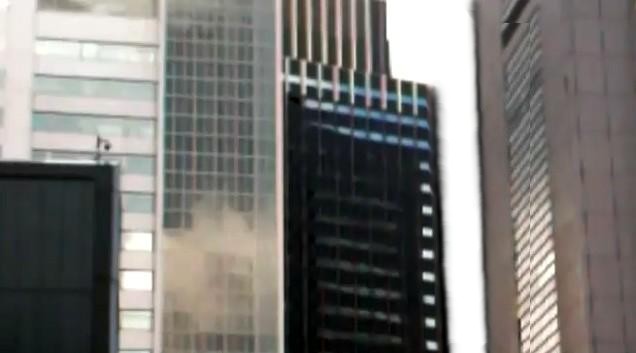
U eno’s concert music, writing for a variety of ensembles from chamber groups to orchestra, has been informed in significant ways by his experiences as a performer... Cultural resonances abound in his music; for example, the biwa and shakahuachi concerto Kaze-no-Oka (‘Hill of the Winds’) has an architectural basis, being inspired by buildings designed by Fumihiko Maki... [Japanese] ideograms are used as musical formants, the details of which can be extrapolated and recontexualized to create an organic, but continually changing, whole. Subjecting an acoustical object or objects to scrutiny using computer-based tools of timbral analysis, Ueno extracts details of its musical makeup, such as its prevailing frequencies and how that profile might change over time... What are the limits of perception? ... In Kaze-no-Oka, in addition to the architectural origin, the conceptual-musical idea is of the orchestral body as a reflection and amplification of the biwa (orchestral strings as ‘super-biwa’) and shakuhachi (bass sax and contrabass clarinet as ‘super-shakuhachi’).”I was relieved to hear that composer Ken Ueno’s parents, grandma, and other family members in Japan are okay following the quake and tsunami.
— Robert Kirzinger, liner notes, Ken Ueno - BMOP ‘Talus’ CD.
T hinking of them and others affected by Friday’s magnitude 8.9 temblor and hundreds of aftershocks, I put Ken’s CD ‘Talus’ on to play. I look at its CD jewelcase. It still bears this orange warning label:
 I think: how big is the dynamic range in decibels of the music in this recording, to which the safety warning label refers? The quietest room on Earth (the old Sound 80 studio in Minneapolis) has an ambient sound pressure level (SPL) of -9.4 dB. And the latent SPL of the top-of-the-line audio signal path (microphones, cables, connectors, pre-amps, amps, EQ, digital recording media, audio workstations/mixing consoles, audio CD media, playback amplifier and EQ, monitors/headphones, tympanic membranes and ossicles in the ears, cochlea, Organ of Corti, spiral ganglion, and acoustic nerve, cranial nerve VIII) is about 3.1 dB RMS, at 2 KHz and 20 years of age.
I think: how big is the dynamic range in decibels of the music in this recording, to which the safety warning label refers? The quietest room on Earth (the old Sound 80 studio in Minneapolis) has an ambient sound pressure level (SPL) of -9.4 dB. And the latent SPL of the top-of-the-line audio signal path (microphones, cables, connectors, pre-amps, amps, EQ, digital recording media, audio workstations/mixing consoles, audio CD media, playback amplifier and EQ, monitors/headphones, tympanic membranes and ossicles in the ears, cochlea, Organ of Corti, spiral ganglion, and acoustic nerve, cranial nerve VIII) is about 3.1 dB RMS, at 2 KHz and 20 years of age.T he corresponding minimum perceptible ambient vibration in the Earth is about -0.7 Richter, according to Thouvenot and Bouchon (see link, below).
T he biggest recorded earthquake was the Great Chilean Earthquake of 22-MAY-1960, which had a magnitude of 9.5 Richter. So, 10 times [9.5 minus -0.7] equals a perceptible dynamic range of 102 dB for maximum earthshaking ever, and 96 dB for Friday’s Japanese earthquake.
A nd the approximate maximum of dynamic range for playing this BMOP CD of Ken’s is about 96 dB on standard digital audio at 16-bit resolution and 44.1 KHz sampling rate, given the limits of CDs and available amplifier chains and monitors/headphones.
K en’s ‘Talus’ CD jewelcase orange warning label alerts us to acoustic SPL differences in his compositions that are basically comparable to the SPL differences of what people experienced in Japan on Friday, just in different ranges of frequency spectrum. [...Heeding orange warning label, turns volume down.]
[30-sec clip, BMOP, Ken Ueno, ‘Kaze-no-Oka’, 1.1MB MP3]
K en’s music is like koans... not a progression from pain to realization, or pain and loss as a reminder of realization. It is the lean-ness of the mind focusing on the present, consciously exerting energy in the face of difficult odds and adversity. Yamada Roshi: “When you stand up, there is only that standing-up in the whole world, with nothing sticking to it.” Ueno’s music is, like, “This! Just this!” ... something of a ‘last word,’ a rhetoric of pure experience. His compositions’ expression is without judgment, sort of a Zen-like “letting the Shodo calligraphy brush write whatever it wants,” but that does not mean that it is ‘acquiescing’ or accepting of the reality, the suffering that Nature dishes out, nor is it free from worry.
O ur thoughts go out to those in Japan and their families.
Video #1
Video #2
Video #3
D o not say
that the deepest meaning
comes only from one’s mouth!
Day and night,
eighty thousand poems
arise one after the other—
and in fact
not one audible utterance
has ever been spoken.”
— Musō Soseki (夢窓 疎石, 1275 – 1351).

- Ken Ueno page at UC Berkeley Dept of Music
- Ken Ueno website
- Ken Ueno on Twitter (#DJ_Moderne)
- Ken Ueno page at BMOP.org
- Bruce D. Interview with Ken Ueno. 29-OCT-2008, CompositionToday.com
- Ken Ueno page at American Academy in Berlin
- NOAA Pacific Tsunami Warning Center (PTWC) online warning log
- Audio Engineering Society
- Acoustical Society of America
- Institute of Acoustics (U.K.)
- Seismological Society of America
- Fries B, Fries M. Digital Audio Essentials. O'Reilly, 2005, pp. 144–7. (dynamic range of 16-bit digital audio)
- Guidoboni E, Ebel J. Earthquakes and Tsunamis in the Past: A Guide to Techniques in Historical Seismology. Cambridge Univ, 2009.
- Hebenstreit G, ed. Perspectives on Tsunami Hazard Reduction: Observations, Theory and Planning. Springer, 2010.
- Hebenstreit G, ed. Tsunami Research at the End of a Critical Decade. Springer, 2010.
- Joseph A. Tsunamis: Detection, Monitoring, and Early-Warning Technologies. Academic, 2011.
- Kajikawa K. Tsunami! Philomel, 2009.
- Levin B, Nosov M. Physics of Tsunamis. Springer, 2010.
- Liu P, Yeh H, Synolakis C, eds. Advanced Numerical Models For Simulating Tsunami Waves And Run-up. World Scientific, 2008.
- Ray D. Hokusai: The Man Who Painted a Mountain. Farrar, Straus & Giroux, 2001.
- Satake K, ed. Tsunamis: Case Studies and Recent Developments. Springer, 2006.
- Thouvenot F, Bouchon M. ‘What is the lowest magnitude threshold at which an earthquake can be felt or heard, or objects thrown into the air?’, in Modern Approaches in Solid Earth Sciences, vol. 2, Historical Seismology: Interdisciplinary Studies of Past and Recent Earthquakes. Fréchet J, Meghraoui M, Stucchi M, eds. Springer, 2010.
- Tsuchiya Y, Shuto N, eds. Tsunami: Progress in Prediction, Disaster Prevention and Warning. Springer, 2010.
No comments:
Post a Comment